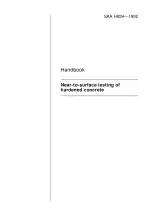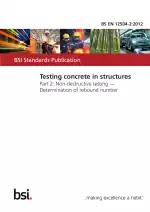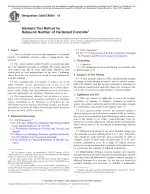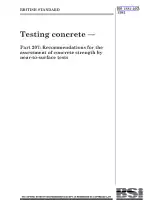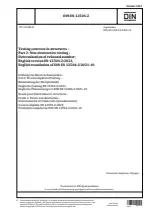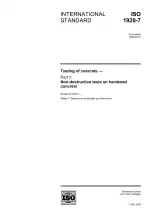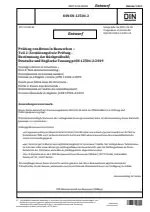HB 34:1992 PDF Download
Handbook / Manual / Guide EN SampleNear-to-surface Testing of Hardened Concrete
Also Known As: SA HB 34:1992, AS HB 34:1992
The HB 34:1992 standard provides information on three methods for testing the quality of concrete near its surface. The first method described is the break-off number, which involves measuring the force required to break off a cylindrical portion of a concrete structure using cantilever loading. This method is generally applicable to concrete with a maximum nominal aggregate size of 20 mm and a thickness of at least 100 mm.
The second method mentioned is the rebound number. This involves determining the rebound distance from a concrete surface using a spring-driven steel hammer. It is important to note that surface hardness methods, including rebound number testing, are not recommended as the sole method for testing concrete quality. They should be used as a preliminary or complementary method, as they only provide information on the quality of the surface layer of concrete (about 30 mm depth).
The third method described is the pull-out strength test, which involves measuring the force required to remove an embedded metal insert from the concrete. Each of these tests can be conducted in the field without the need to remove a sample for laboratory testing.
The standard also provides additional information on near-to-surface testing of hardened concrete in BS 1881, Parts 201 and 207. It also references other standards, such as BS 1881, Parts 203 and 204, which provide information on ultrasonic testing of concrete and the use of the electromagnetic covermeter, respectively.
| ICS Codes | 91.100.30 - Concrete and concrete products |
| Language(s) | English |
| File Size | 92.2 KB |

